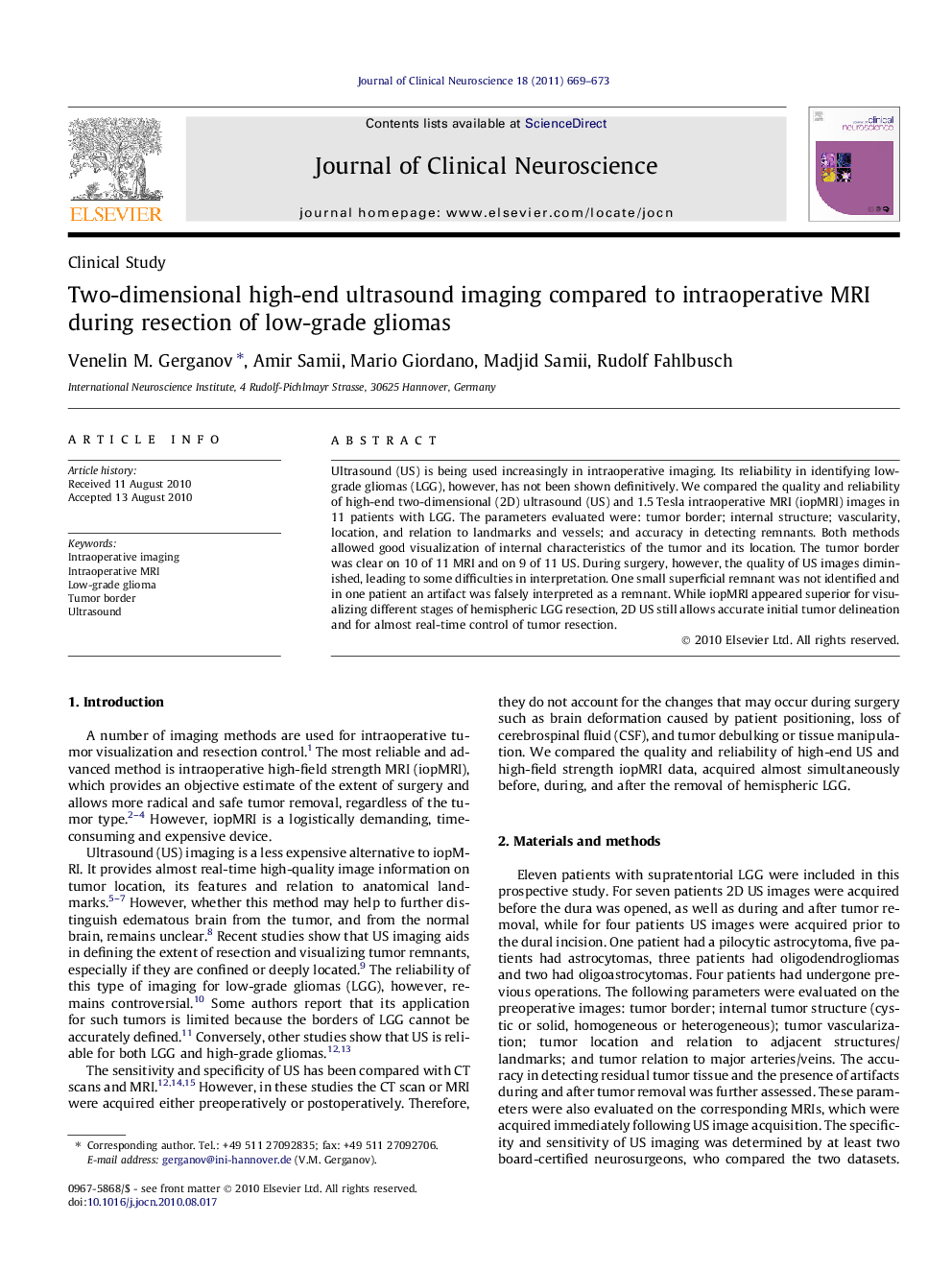| کد مقاله | کد نشریه | سال انتشار | مقاله انگلیسی | نسخه تمام متن |
|---|---|---|---|---|
| 3061206 | 1187466 | 2011 | 5 صفحه PDF | دانلود رایگان |

Ultrasound (US) is being used increasingly in intraoperative imaging. Its reliability in identifying low-grade gliomas (LGG), however, has not been shown definitively. We compared the quality and reliability of high-end two-dimensional (2D) ultrasound (US) and 1.5 Tesla intraoperative MRI (iopMRI) images in 11 patients with LGG. The parameters evaluated were: tumor border; internal structure; vascularity, location, and relation to landmarks and vessels; and accuracy in detecting remnants. Both methods allowed good visualization of internal characteristics of the tumor and its location. The tumor border was clear on 10 of 11 MRI and on 9 of 11 US. During surgery, however, the quality of US images diminished, leading to some difficulties in interpretation. One small superficial remnant was not identified and in one patient an artifact was falsely interpreted as a remnant. While iopMRI appeared superior for visualizing different stages of hemispheric LGG resection, 2D US still allows accurate initial tumor delineation and for almost real-time control of tumor resection.
Journal: Journal of Clinical Neuroscience - Volume 18, Issue 5, May 2011, Pages 669–673